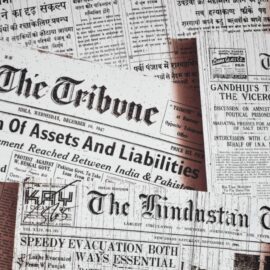

This article is an excerpt from the Shortform book guide to "What You Do Is Who You Are" by Ben Horowitz. Shortform has the world's best summaries and analyses of books you should be reading.
Like this article? Sign up for a free trial here .
Are you trying to change the culture of your organization? What can you learn from Haitian revolutionary Toussaint Louverture about this kind of leadership?
Toussaint Louverture led the military and diplomatic campaign that liberated enslaved people in Haiti and set the stage for its independence from France. In What You Do Is Who You Are, Ben Horowitz draws cultural leadership insights from Louverture.
Read on to learn more about Louverture and his leadership.
Leading Cultural Change
Who was Toussaint Louverture, and why should we know his story? According to Horowitz, Louverture’s military and cultural leadership elevated the Haitian revolution from slave revolt to strategic military and diplomatic action. Under his leadership, they defeated Spain and England and improved their relationship with France. A decade after the insurrection began, he became governor of the island. He proclaimed a new constitution that abolished slavery and ensured people of all races could have access to any job.
(Shortform note: Although Haiti didn’t declare its independence from France until 1804, almost a year after Louverture’s death, his actions made independence possible. The revolution began in 1791, but it took 13 years of Louverture’s political and trade negotiations with France and the United States, as well as warfare with France, England, and Spain for Haiti to finally be able to declare its independence.)
Louverture elevated the global standing of his army by constantly teaching and reinforcing the behaviors soldiers needed to practice. His leadership showed slave-trading colonial nations that the behavior they criticized in enslaved people was a result of the dehumanizing conditions in which they were forced to subsist, not their nature. Slavery had created an environment where enslaved people had to focus on day-to-day survival, but Louverture created a visionary culture using the virtues he valued most in African and European cultures.
| The Dehumanizing Effects of Slavery Although some critics have taken issue with Horowitz’s depiction of enslaved people as a group without culture, this might not be a fair assessment. Horowitz argues that Louverture took what he considered to be the best characteristics of their native cultures as well as European cultures to build a new identity for Haiti. While his emphasis on the difficulty of establishing this new cultural identity and attending behaviors might seem callous, it’s founded on the excruciating reality of enslaved people. In her book Creating Black Americans: African American History and Its Meanings, 1619 to the Present, Nell Irvin Painter offers a detailed account of the dehumanizing environment enslaved people subsisted in. Besides the physical and psychological trauma of constant abuse, neglect, and overwork, they had no access to education and no right to wages or property. All of this, she argues, led to them developing “habits of deceit and anger” that further damaged them and the bonds among them. Thus, although enslaved people were never without a culture, elements of it were likely not conducive to the kind of society Louverture wanted to establish. |
Horowitz believes that cultural leaders in the business world should follow Louverture’s example of building existing strengths into the culture and constantly reinforcing the behavior they want. Doing so will allow members of their organizations to internalize the culture and outsiders to acknowledge its strengths.
(Shortform note: One of the key criticisms Horowitz received over his handling of Louverture’s history was that he used it to promote corporate lessons that are alien to Louverture’s reality. Horowitz is not alone in this appropriation of Louverture’s story, though. Although he has been the subject of several books, Louverture remains a sort of mystery, even for his biographers. The lack of documents to certify details of his life story prior to the revolution, as well as conflicting documents from his time as a military leader, has led to Louverture’s story being appropriated in all sorts of ways—even as business advice.)
Leadership Lesson #1: Leverage Your Employees’ Strengths
Louverture leveraged his soldiers’ guerrilla warfare experience and encouraged his army to use voodoo songs to communicate over long distances without the Europeans’ understanding.
(Shortform note: Louverture’s leveraging of the cultural characteristics of his people was short-lived. As Horowitz himself notes in the book, after having taken advantage of it to win several battles, Louverture outlawed voodoo in the constitution, making Catholicism the official religion of the island. In their book Toussaint Louverture: A Black Jacobin in the Age of Revolutions, Charles Forsdick and Christian Hogsbjerg argue that this decision, along with mandatory work requirements, served to alienate the Black people of Haiti from his leadership.)
In the same way, Horowitz says you should take advantage of the existing strengths of the culture you’re working with. Allowing employees to practice strengths they already have will help lower the cognitive load that comes with incorporating new behaviors. Identify virtues your employees have that support your vision for the organization and its culture and build them into the new culture you’re creating.
(Shortform note: This advice highlights the flexibility of Horowitz’s approach to culture. He sees culture as a top-down and bottom-up process where both leaders and employees have a role. Experts warn that by only taking a top-down approach in which leaders design the culture and filter it down to their employees they are disregarding the fact that culture is taking shape every day as employees interact with each other. To supplement top-down interventions such as choosing virtues and implementing mechanisms to bring those virtues to life, leaders should study their cultures as they develop bottom-up, identifying their strengths and noticing how they evolve over time.)
Leadership Lesson #2: Align Your Decisions and Example With Strategic Priorities
Louverture enforced a forward-looking culture that focused on the long-term sustainability of their freedom. Rather than exacting revenge on plantation owners (and former slave masters), he allowed them to live and continue farming their lands to sustain the economy. However, he made them share the profits with the workers and pay wages.
(Shortform note: Toussaint Louverture: A Black Jacobin in the Age of Revolutions (Forsdick and Hogsbjerg) argues that this move turned the former chattel slaves into wage slaves. By making work mandatory and not allowing peasants to buy their own pieces of land, Louverture gave the Black peasants of Haiti no choice but to continue working for the same plantation owners. They now received wages, but were still treated unfairly and couldn’t choose where to work.)
Louverture’s decision not to kill the former slave owners shocked his army, but it made clear that their culture was in service of the bigger mission of keeping Haiti free—which required being economically sustainable. Horowitz says decisions such as Louverture’s send clear messages because the leader’s actions to enforce culture communicate the priorities of the organization to the rest of the team.
To set the right example for his soldiers, who were eager to take revenge on their former masters, Louverture refrained from exacting revenge on his rival, André Rigaud, a mulatto who believed Blacks should remain at the bottom of the system, with mulattoes above them. Louverture defeated Rigaud but didn’t kill him or his supporters, publicly forgiving them at the end of their civil war. (Haiti and Louverture experienced civil war as well as wars against colonizers.) As the leader, you must be the first to follow the rules and embody the virtues. Horowitz stresses that if you don’t follow the cultural rules you’re setting for everyone else, employees will follow your example rather than the rule.
Example: Netflix Pivots From DVDs to Streaming
One of the toughest decisions Netflix CEO Reed Hastings made during his company’s pivot from DVDs to streaming was no longer letting top executives from the DVD division attend leadership meetings. It was especially hard to do so because the DVD business had sustained the company until then, but Hastings needed to steer Netflix toward the future. This decision signaled to everyone in the company that Netflix was on a new path.
| Focus on the Future Instead of the Past Aligning choices with priorities and Netflix’s pivot to streaming echo Peter Drucker’s advice in The Effective Executive to focus on only a few key things and do them one at a time. For Drucker, it comes down to the simple fact that focusing allows you to do better work, faster. The way to decide what to focus on is by having clear priorities which he says requires courage more than analysis. In his view, courage requires that you: Focus on the future instead of the past. Focus on opportunities, instead of on problems. By focusing on the future and on opportunities, companies can avoid a common pitfall: preserving legacy products (such as DVDs) while failing to develop products that will sustain the business in the future. To assess whether legacy products are worth keeping, Drucker recommends regularly asking, “If we weren’t already doing this, would it make any sense to start doing it?” If the answer is “no,” drop it. |

———End of Preview———
Like what you just read? Read the rest of the world's best book summary and analysis of Ben Horowitz's "What You Do Is Who You Are" at Shortform .
Here's what you'll find in our full What You Do Is Who You Are summary :
- The three reasons leaders should care about culture
- How a sense of purpose boosts employees' performance
- What the Samurai and Genghis Khan can teach you about leadership






